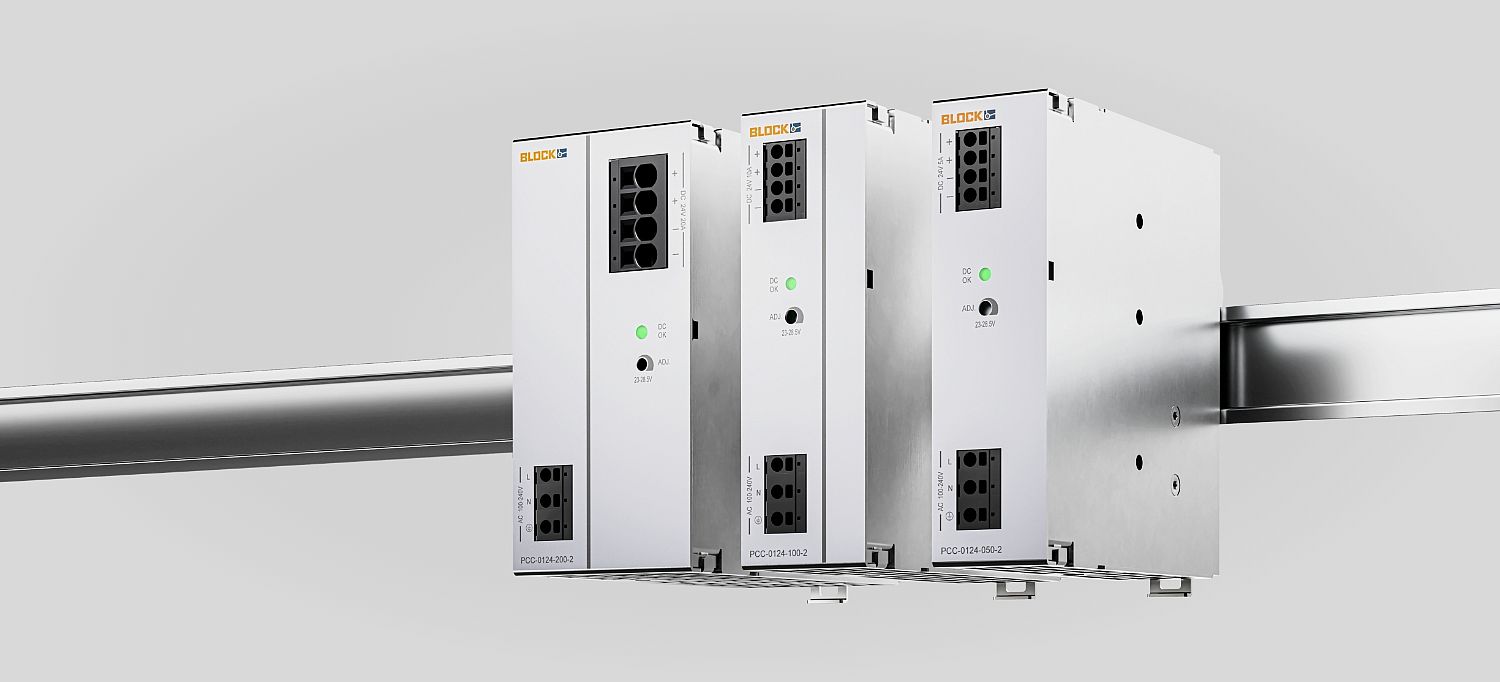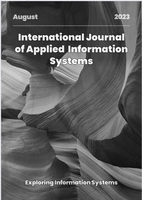The week's pick
Random Articles
Reseach Article
Autism Spectrum Disorder: Review of Datasets, Computational Models, and Future Research Directions
| International Journal of Applied Information Systems |
| Foundation of Computer Science (FCS), NY, USA |
| Volume 13 - Number 1 |
| Year of Publication: 2025 |
| Authors: Jothi Lakshmi U., R. Thiyagarajan |
 10.5120/ijais2025452029
10.5120/ijais2025452029
|
Jothi Lakshmi U., R. Thiyagarajan . Autism Spectrum Disorder: Review of Datasets, Computational Models, and Future Research Directions. International Journal of Applied Information Systems. 13, 1 ( Sep 2025), 53-63. DOI=10.5120/ijais2025452029
Abstract
Autism spectrum disorder (ASD) is a heterogeneous neurodevelopmental disorder defined by social, communicative, and behavioral difficulties. Early detection is needed to enhance intervention outcomes but is limited by the drawbacks of standard behavioral assessment. Researches are carried out with different dataset that – structured and unstructured. Innovations that involve video games, smart phones are also growing. This review has investigated various ASD detection and intervention methods, integrating evidence from research studies using neuroimaging, behavioral indicators, multimodal physiological information, and machine learning. The summarization provided in work would help any researcher to understand the rudiments of ASD research and its research gaps.
References
- K. Asbury, U. Toseeb, and N. Barrow, “What do parents of nonverbal and minimally verbal autistic children think about genomic autism research?,” Autism, pp. 1–9, 2024, doi: 10.1177/13623613231213431.
- T. I. Williams, T. Loucas, J. Sin, M. Jeremic, S. Meyer, S. Boseley, S. Fincham-Majumdar, G. Aslett, R. Renshaw, and F. Liu, “Using music to assist language learning in autistic children with minimal verbal language: The MAP feasibility RCT,” Autism, pp. 1–19, 2024, doi: 10.1177/13623613241233804.
- A. Leedham, A. R. Thompson, R. Smith, and M. Freeth, “‘I was exhausted trying to figure it out’: The experiences of females receiving an autism diagnosis in middle to late adulthood,” Autism, vol. 24, no. 1, pp. 135–146, 2020, doi: 10.1177/1362361319853442.
- S. C. K. Shaw, L. Carravallah, M. Johnson, J. O’Sullivan, N. Chown, S. Neilson, and M. Doherty, “Barriers to healthcare and a ‘triple empathy problem’ may lead to adverse outcomes for autistic adults: A qualitative study,” Autism, pp. 1–12, 2023, doi: 10.1177/13623613231205629.
- I. T. Latzer, Y. Leitner, and O. Karnieli-Miller, “Core experiences of parents of children with autism during the COVID-19 pandemic lockdown,” Autism, vol. 25, no. 4, pp. 1047–1059, 2021, doi: 10.1177/1362361320984317.
- J. R. Steinbrenner, N. McIntyre, L. F. Rentschler, J. N. Pearson, P. Luelmo, M. E. Jaramillo, B. A. Boyd, C. Wong, S. W. Nowell, S. L. Odom, and K. A. Hume, “Patterns in reporting and participant inclusion related to race and ethnicity in autism intervention literature: Data from a large-scale systematic review of evidence-based practices,” Autism, vol. 26, no. 8, pp. 2026–2040, 2022, doi: 10.1177/13623613211072593.
- V. K. Jaswal, A. J. Lampi, and K. M. Stockwell, “Literacy in nonspeaking autistic people,” Autism, pp. 1–12, 2024, doi: 10.1177/13623613241230709.
- E. Pellicano, S. Brett, J. den Houting, M. Heyworth, I. Magiati, R. Steward, A. Urbanowicz, and M. Stears, “COVID-19, social isolation and the mental health of autistic people and their families: A qualitative study,” Autism, vol. 26, no. 4, pp. 914–927, 2022, doi: 10.1177/13623613211035936.
- M. Bala, M. H. Ali, M. S. Satu, K. F. Hasan, and M. A. Moni, “Efficient machine learning models for early stage detection of autism spectrum disorder,” Algorithms, vol. 15, no. 5, p. 166, 2022, doi: 10.3390/a15050166.
- R. A. Bahathiq, H. Banjar, S. K. Jarraya, A. K. Bamaga, and R. Almoallim, “Efficient diagnosis of autism spectrum disorder using optimized machine learning models based on structural MRI,” Applied Sciences, vol. 14, no. 2, p. 473, 2024, doi: 10.3390/app14020473.
- J. M. Olaguez-Gonzalez, I. Chairez, L. Breton-Deval, and M. Alfaro-Ponce, “Machine learning algorithms applied to predict autism spectrum disorder based on gut microbiome composition,” Biomedicines, vol. 11, no. 10, p. 2633, 2023, doi: 10.3390/biomedicines11102633.
- A.-L. Popescu, N. Popescu, C. Dobre, E.-S. Apostol, and D. Popescu, “IoT and AI-based application for automatic interpretation of the affective state of children diagnosed with autism,” Sensors, vol. 22, no. 7, p. 2528, 2022, doi: 10.3390/s22072528.
- K. K. Hyde, M. N. Novack, N. LaHaye, C. Parlett-Pelleriti, R. Anden, D. R. Dixon, and E. Linstead, “Applications of supervised machine learning in autism spectrum disorder research: a review,” Review Journal of Autism and Developmental Disorders, vol. 6, pp. 128–146, 2019, doi: 10.1007/s40489-019-00158-x.
- Q. Tariq, J. Daniels, J. N. Schwartz, P. Washington, H. Kalantarian, and D. P. Wall, “Mobile detection of autism through machine learning on home video: a development and prospective validation study,” PLoS Med., vol. 15, no. 11, p. e1002705, 2018, doi: 10.1371/journal.pmed.1002705.
- F. Thabtah and D. Peebles, “A new machine learning model based on induction of rules for autism detection,” Health Informatics Journal, vol. 26, no. 1, pp. 264–286, 2020, doi: 10.1177/1460458218824711.
- M. M. Rahman, O. L. Usman, R. C. Muniyandi, S. Sahran, S. Mohamed, and R. A. Razak, “A review of machine learning methods of feature selection and classification for autism spectrum disorder,” Brain Sciences, vol. 10, no. 12, p. 949, 2020, doi: 10.3390/brainsci10120949.
- R. A. Bahathiq, H. Banjar, A. K. Bamaga, and S. K. Jarraya, “Machine learning for autism spectrum disorder diagnosis using structural magnetic resonance imaging: promising but challenging,” Frontiers in Neuroinformatics, vol. 16, p. 949926, 2022, doi: 10.3389/fninf.2022.949926.
- T. Eslami, F. Almuqhim, J. S. Raiker, and F. Saeed, “Machine learning methods for diagnosing autism spectrum disorder and attention-deficit/hyperactivity disorder using functional and structural MRI: a survey,” Frontiers in Neuroinformatics, vol. 14, p. 575999, 2021, doi: 10.3389/fninf.2020.575999.
- Y.-H. Chen, Q. Chen, L. Kong, and G. Liu, “Early detection of autism spectrum disorder in young children with machine learning using medical claims data,” BMJ Health Care Inform., vol. 29, p. e100544, 2022, doi: 10.1136/bmjhci-2022-100544.
- R. Thapa, A. Garikipati, M. Ciobanu, N. P. Singh, E. Browning, J. DeCurzio, G. Barnes, F. A. Dinenno, Q. Mao, and R. Das, “Machine learning differentiation of autism spectrum sub-classifications,” Journal of Autism and Developmental Disorders, 2023, doi: 10.1007/s10803-023-06121-4.
- A. Kabir, A. Anwar, and M. Z. Islam, “Detecting autism spectrum disorder using machine learning techniques,” Health Information Science and Systems, vol. 9, no. 1, pp. 1–9, 2021, doi: 10.1007/s13755-021-00145-9.
- D. D. Khudhur and S. D. Khudhur, “The classification of autism spectrum disorder by machine learning methods on multiple datasets for four age groups,” Measurement: Sensors, vol. 27, p. 100774, 2023, doi: 10.1016/j.measen.2023.100774.
- H. Sharif and R. A. Khan, “A novel machine learning-based framework for detection of autism spectrum disorder (ASD),” Applied Artificial Intelligence, vol. 36, no. 1, e2004655, 2022, doi: 10.1080/08839514.2021.2004655.
- K. Chowdhury and M. A. Iraj, “Predicting autism spectrum disorder using machine learning classifiers,” in Proc. 2020 5th Int. Conf. Recent Trends on Electronics, Information, Communication & Technology (RTEICT), pp. 324–329, 2020, doi: 10.1109/RTEICT49044.2020.9332197.
- J. Alwidian, A. Elhassan, and R. Ghnemat, “Predicting autism spectrum disorder using machine learning technique,” International Journal of Recent Technology and Engineering, vol. 8, no. 5, pp. 4139–4144, 2020, doi: 10.35940/ijrte.E6016.018520.
- S. A. Kulkarni, D. Vasudevaraju, C. R. Chandra, D. M., and C. S. Ranganath, “Machine learning-based model for prediction of autism spectrum disorder,” International Journal of Computer Science and Information Technology Research, vol. 10, no. 4, pp. 46–52, 2022, doi: 10.5281/zenodo.7432991.
- K. Vakadkar, D. Purkayastha, and D. Krishnan, “Detection of autism spectrum disorder in children using machine learning techniques,” SN Computer Science, vol. 2, p. 386, 2021, doi: 10.1007/s42979-021-00776-5.
- S. R. Sujatha, A. S. L. Aarthy, J. M. Chatterjee, A. Alaboudi, and N. Z. Jhanjhi, “A machine learning way to classify autism spectrum disorder,” International Journal of Emerging Technologies in Learning, vol. 16, no. 6, pp. 182–192, 2021, doi: 10.3991/ijet.v16i06.19559.
- A. Hendr, U. Ozgunalp, and M. E. Kaya, “Diagnosis of autism spectrum disorder using convolutional neural networks,” Electronics, vol. 12, no. 3, p. 612, 2023, doi: 10.3390/electronics12030612.
- S. Labde, K. Sawant, and D. Shah, “Learning aid for autistic students using machine learning,” Journal of Emerging Technologies and Innovative Research, vol. 6, no. 5, pp. 260–266, 2019.
- S. Raja and S. Masood, “Analysis and detection of autism spectrum disorder using machine learning techniques,” Procedia Computer Science, vol. 167, pp. 994–1004, 2020, doi: 10.1016/j.procs.2020.03.399.
- Daniela, N. Dominica, T. W. Cenggoro, and B. Pardamean, “Machine learning approaches in detecting autism spectrum disorder,” Procedia Computer Science, vol. 227, pp. 1070–1076, 2023, doi: 10.1016/j.procs.2023.10.617.
- N. Deveau, P. Washington, E. Leblanc, A. Husic, K. Dunlap, Y. Penev, A. Kline, O. C. Mutlu, and D. P. Wall, “Machine learning models using mobile game play accurately classify children with autism,” Intelligence-Based Medicine, vol. 6, p. 100057, 2022, doi: 10.1016/j.ibmed.2022.100057.
- Z. Sun, Y. Yuan, X. Dong, Z. Liu, K. Cai, W. Cheng, J. Wu, Z. Qiao, and A. Chen, “Supervised machine learning: a new method to predict the outcomes following exercise intervention in children with autism spectrum disorder,” International Journal of Clinical and Health Psychology, vol. 23, p. 100409, 2023, doi: 10.1016/j.ijchp.2023.100409.
- F. Zhang, P. Savadjiev, W. Cai, Y. Song, Y. Rathi, B. Tunç, D. Parker, T. Kapur, R. T. Schultz, N. Makris, R. Verma, and L. J. O’Donnell, “Whole brain white matter connectivity analysis using machine learning: an application to autism,” NeuroImage, vol. 172, pp. 826–837, 2018, doi: 10.1016/j.neuroimage.2017.12.026.
- I. Tuomi, “The impact of artificial intelligence on learning, teaching, and education: Policies for the future,” in EUR 29442 EN, Publications Office of the European Union, Luxembourg, 2018, doi: 10.2760/12297.
- M. A. Nabil, A. Akram, and K. M. Fathalla, “Applying machine learning on home videos for remote autism diagnosis: Further study and analysis,” Health Informatics Journal, vol. 27, no. 1, pp. 1–13, 2021, doi: 10.1177/1460458221991882.
- Y. Du, H. Hao, Y. Xing, J. Niu, and V. D. Calhoun, “A transdiagnostic biotype detection method for schizophrenia and autism spectrum disorder based on graph kernel,” IEEE Transactions on Biomedical Engineering, vol. 69, no. 9, pp. 2907–2917, 2022, doi: 10.1109/TBME.2021.3088954.
- L. Mertz, “AI, virtual reality, and robots advancing autism diagnosis and therapy,” IEEE Pulse, vol. 12, no. 5, pp. 6–11, 2021, doi: 10.1109/MPULS.2021.3113092.
- G. Nie, A. Ullal, Z. Zheng, A. R. Swanson, A. S. Weitlauf, Z. E. Warren, and N. Sarkar, “An immersive computer-mediated caregiver-child interaction system for young children with autism spectrum disorder,” IEEE Transactions on Neural Systems and Rehabilitation Engineering, vol. 29, pp. 884–893, 2021, doi: 10.1109/TNSRE.2021.3077480.
- T. Talkar, J. R. Williamson, D. J. Hannon, H. M. Rao, S. Yuditskaya, K. T. Claypool, D. Sturim, L. Nowinski, H. Saro, C. Stamm, M. Mody, C. J. McDougle, and T. F. Quatieri, “Assessment of speech and fine motor coordination in children with autism spectrum disorder,” IEEE Access, vol. 8, pp. 127535–127547, 2020, doi: 10.1109/ACCESS.2020.3007348.
- M. Chistol, C. Turcu, and M. Danubianu, “Autism Assistant: A platform for autism home-based therapeutic intervention,” IEEE Access, vol. 11, pp. 94188–94197, 2023, doi: 10.1109/ACCESS.2023.3310397.
- J. Hashemi, G. Dawson, K. L. H. Carpenter, K. Campbell, Q. Qiu, S. Espinosa, S. Marsan, J. P. Baker, H. L. Egger, and G. Sapiro, “Computer vision analysis for quantification of autism risk behaviors,” IEEE Transactions on Affective Computing, vol. 12, no. 1, pp. 215–226, 2021, doi: 10.1109/TAFFC.2018.2868196.
- Z. Zheng, Q. Fu, H. Zhao, A. R. Swanson, A. S. Weitlauf, Z. E. Warren, and N. Sarkar, “Design of an autonomous social orienting training system for young children with autism,” IEEE Transactions on Neural Systems and Rehabilitation Engineering, vol. 25, no. 6, pp. 668–677, 2017, doi: 10.1109/TNSRE.2016.2598727.
- L. Zhang, A. Z. Amat, H. Zhao, A. R. Swanson, A. S. Weitlauf, Z. E. Warren, and N. Sarkar, “Design of an intelligent agent to measure collaboration and verbal-communication skills of children with autism spectrum disorder in collaborative puzzle games,” IEEE Transactions on Learning Technologies, vol. 14, no. 3, pp. 338–349, 2021, doi: 10.1109/TLT.2020.3029223.
- M. Eni, I. Dinstein, M. Ilan, I. Menashe, G. Meiri, and Y. Zigel, “Estimating autism severity in young children from speech signals using a deep neural network,” IEEE Access, vol. 8, pp. 139489–139500, 2020, doi: 10.1109/ACCESS.2020.3012532.
- P. R. K. Babu, J. M. Di Martino, Z. Chang, S. Perochon, K. L. H. Carpenter, S. Compton, S. Espinosa, G. Dawson, and G. Sapiro, “Exploring complexity of facial dynamics in autism spectrum disorder,” IEEE Transactions on Affective Computing, vol. 14, no. 2, pp. 919–930, 2023, doi: 10.1109/TAFFC.2021.3113876.
- H. Zhao, A. R. Swanson, A. S. Weitlauf, Z. E. Warren, and N. Sarkar, “Hand-in-Hand: A communication-enhancement collaborative virtual reality system for promoting social interaction in children with autism spectrum disorders,” IEEE Transactions on Human-Machine Systems, vol. 48, no. 2, pp. 136–147, 2018, doi: 10.1109/THMS.2018.2791562.
- L. Mertz, “New quantitative approach to autism diagnosis,” IEEE Pulse, vol. 10, no. 2, pp. 34–39, 2019, doi: 10.1109/MPULS.2019.2899766.
- Z. Zheng, E. M. Young, A. R. Swanson, A. S. Weitlauf, Z. E. Warren, and N. Sarkar, “Robot-mediated imitation skill training for children with autism,” IEEE Transactions on Neural Systems and Rehabilitation Engineering, vol. 24, no. 6, pp. 660–671, 2016, doi: 10.1109/TNSRE.2015.2475724.
- L. Hecker, M. Wilson, L. Tebartz van Elst, and J. Kornmeier, “Altered EEG variability on different time scales in participants with autism spectrum disorder,” Research Square, preprint, posted Sept. 13, 2021, doi: 10.21203/rs.3.rs-880125/v1.
- L. Hecker, M. Wilson, L. Tebartz van Elst, and J. Kornmeier, “Altered EEG variability on different time scales in participants with autism spectrum disorder: an exploratory study,” Scientific Reports, vol. 12, p. 13068, 2022, doi: 10.1038/s41598-022-17304-x.
Index Terms
Keywords

